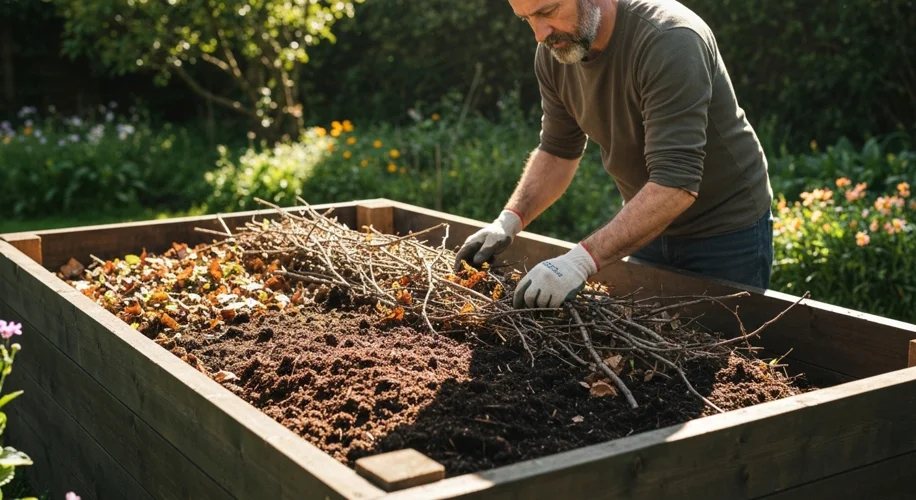Building a raised garden bed is a fantastic way to improve your gardening game. It gives you better control over your soil, improves drainage, and can save your back! But once the frame is up, a big question looms: how do you fill it without breaking the bank? Let’s dig into some cost-efficient solutions.
Should You Remove Existing Grass?
My usual advice? If you’re building on a lawn, leave the grass underneath. Grass and sod are organic matter that will break down over time, feeding your soil. Just make sure to lay it down grass-side down. You can even top it with a layer of cardboard to suppress weeds further. This saves you the labor of removal and gives your new soil a rich foundation.
Layering for Success: The Hugelkultur Lite Approach
Raised beds are deep, so filling them entirely with expensive potting mix is unnecessary and costly. Think of it like building a lasagna – layers of different materials. This approach, often called Hugelkultur Lite, uses bulky, organic materials at the bottom.
- The Base Layer (Bulky Stuff): Start with larger, woody materials. Think fallen branches, twigs, small logs, or even untreated lumber scraps if you have them. These break down slowly, providing aeration and nutrients over time. Avoid treated wood, as chemicals can leach into your soil.
-
The Middle Layer (Organic Matter): Next, add softer organic materials. This could be leaves, grass clippings (if you don’t have seeds in them), straw, hay, or compost. If you have a compost pile, this is the perfect place to use some of your older, more decomposed material. Pine needles or straw can also add beneficial acidity for certain plants.
-
The Top Layer (The Good Stuff): This is where your plants will truly thrive. Use a mix of good quality topsoil, compost, and perhaps some peat moss or coconut coir for moisture retention. You don’t need a massive amount of this. A 4-6 inch layer is usually sufficient for most vegetables and flowers.
Cost-Saving Tips:
- Local Resources: Check with your local municipality or landscaping companies. They often have free compost or mulch available, especially during spring cleanup.
- Kitchen Scraps: Continue adding your kitchen scraps to your compost pile. This is free fertilizer! Coffee grounds, eggshells, and vegetable peels all contribute to nutrient-rich compost.
- Leaf Collection: In the fall, collect fallen leaves. They are free soil conditioners and mulches.
- Neighbors: Gardening neighbors might have excess compost or organic materials they’d be happy to share.
Filling a raised bed doesn’t have to be an expensive undertaking. By using layers of organic materials and sourcing smartly, you can create a rich, nutrient-dense environment for your plants while being kind to your wallet. Happy gardening!

